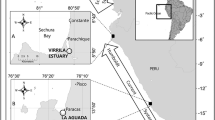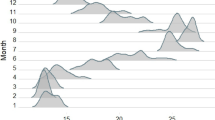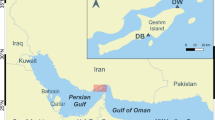Abstract.
Neonate sea turtles disperse from nesting beaches into the open ocean and develop during a multi-year growth period at sea, but data that characterize their behavior, feeding, and habitat during this developmental period have been few. Limited information has suggested that neonate sea turtles associate with lines of floating debris and biota at areas of surface downwelling. Data from the present study come from measurements of habitat, turtle behavior, and apparent foraging preferences in areas where neonate (post-hatchling) loggerhead turtles (Caretta caretta) were observed and captured. Turtles were observed (n=293) and captured (n=241 of the 293 observed) in downwelling lines that had formed in the slope water near the Gulf Stream front off east-central Florida, USA. Catch-per-unit-effort averaged 12.4 turtles/h from a vessel moving at 2.5 knots. Turtles were largely inactive and were closely associated with floating material, especially pelagic species of Sargassum. Turtles captured along with samples of floating material and given a gastric-esophageal lavage showed a preference for animal material (35.5% of volume in habitat, 70.9% in lavage) over plant material (60.3% of volume in habitat, 22.5% in lavage). Ingested anthropogenic debris included tar (20% of turtles) and plastics (15% of turtles). Ingested animals were principally small (most <1 mm) and were typically slow-moving or non-motile species or stages. Ingested plants were most commonly Sargassum fragments or seagrasses that bore epiphytic animals. Preferred or commonly ingested animals were hydroids, copepods, and pleuston such as Janthina, Creseis, Porpita, and Halobates. Data support a hypothesis describing post-hatchling loggerheads as facultatively active but principally low-energy float-and-wait foragers both within and outside of downwelling lines. Pelagic dispersal of turtles may be best predicted by a "smart" drifter analogy wherein turtle buoyancy, surface advection, and minimal oriented movement determine their distribution at sea. Conservation implications of plastic and tar ingestion are discussed.
Similar content being viewed by others
Author information
Authors and Affiliations
Additional information
Electronic Publication
Rights and permissions
About this article
Cite this article
Witherington, .B. Ecology of neonate loggerhead turtles inhabiting lines of downwelling near a Gulf Stream front. Marine Biology 140, 843–853 (2002). https://doi.org/10.1007/s00227-001-0737-x
Received:
Accepted:
Issue Date:
DOI: https://doi.org/10.1007/s00227-001-0737-x




